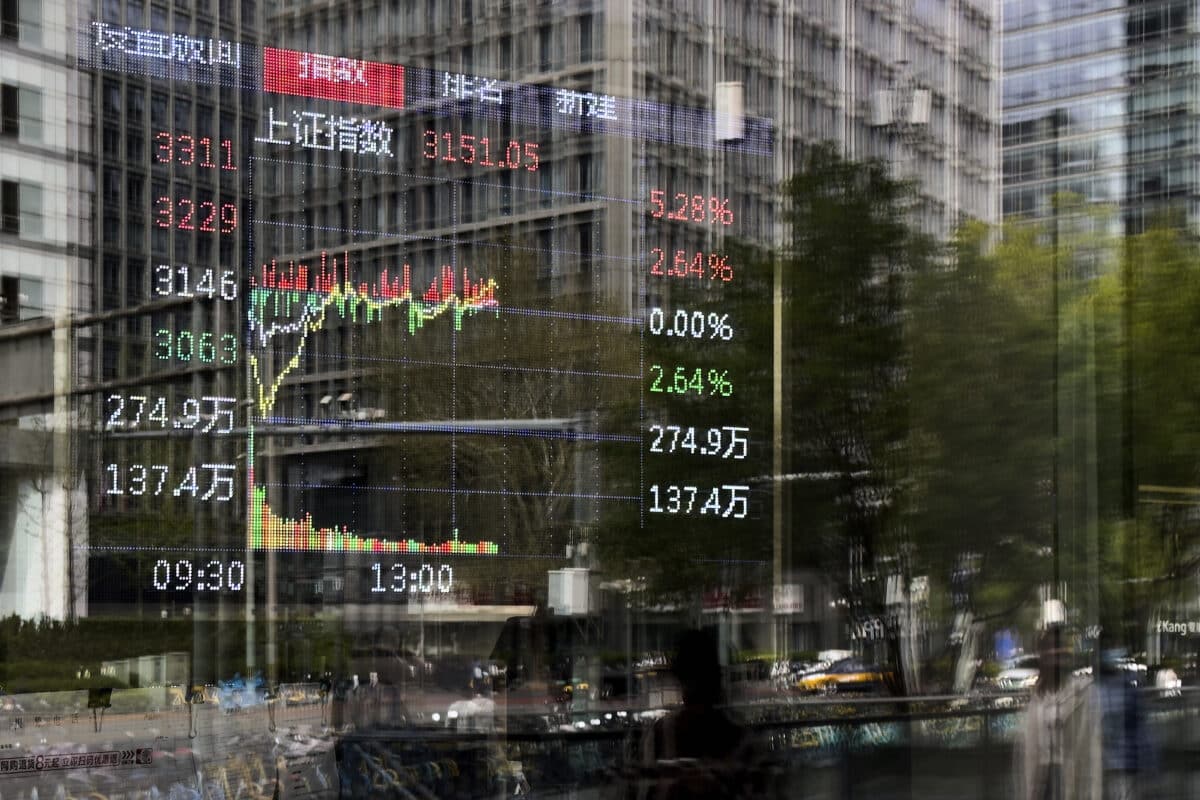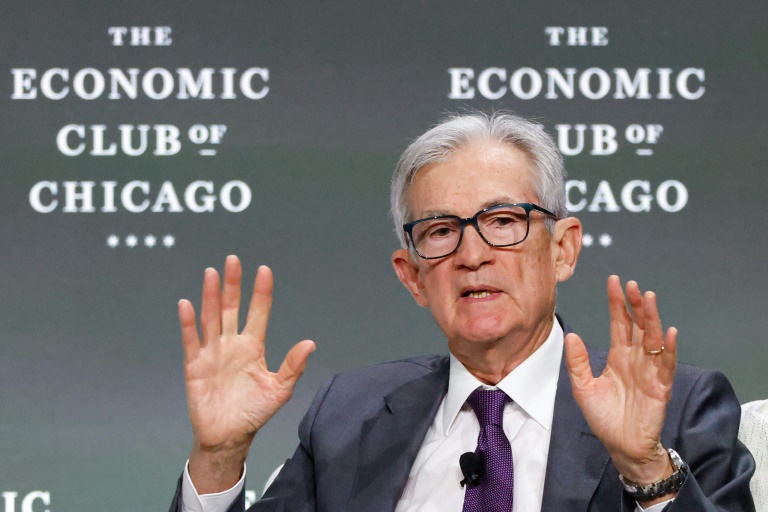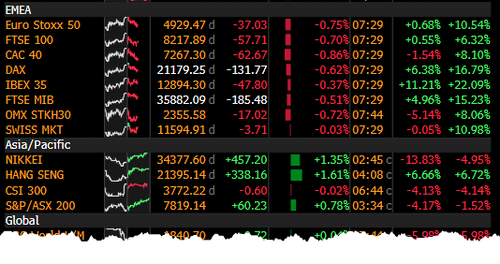Pedestrian and office buildings are reflected on a brokerage house’s window as an electronic board displays Shanghai shares trading index in the Central Business District, in Beijing. China has raised tariffs on US goods to 84 percent, effective April 10. (AP Photo/Andy Wong) BANGKOK, Thailand — China has raised tariffs to 84 percent on goods coming from the United States in an additional countermeasure, effective April 10.
Last week, China said it would levy 34 percent tariffs on all US goods. On Wednesday, Trump’s tariffs of 104 percent went into effect on Chinese exports to the United States. Earlier, China again vowed to “fight to the end” against Donald Trump’s tariffs in a lengthy policy statement published Wednesday, arguing that trade between the two countries is in balance as a 104 percent tax on the country’s exports to the US came into effect.

The government declined to say whether it would negotiate with the White House, as many other countries have started doing. READ: Asia and European shares sink as US tariffs take effect “If the U.S.
insists on further escalating its economic and trade restrictions, China has the firm will and abundant means to take necessary countermeasures and fight to the end” the Ministry of Commerce wrote in a statement introducing the white paper. Last Friday, China announced a 34 percent tariff on all goods imported from the US, export controls on rare earths minerals, and a slew of other measures in response to Trump’s “Liberation Day” tariffs. Trump then added an additional 50 percent tariff on goods from China, saying negotiations with them were terminated.
So far, China has not appeared interested in bargaining. “If the U.S.
truly wants to resolve issues through dialogue and negotiation, it should adopt an attitude of equality, respect and mutual benefit,” said Ministry of Foreign Affairs spokesman Lin Jian Wednesday. The paper says that the US has not honored the promises it made in the phase 1 trade deal concluded during Trump’s first term. As an example, it said that a US law that would ban TikTok unless it is sold by its Chinese parent company violates a promise that neither would “pressure the other party to transfer technology to its own individuals.
” Trump signed an order to keep TikTok running for another 75 days last week after a potential deal to sell the app to American owners was put on ice. ByteDance representatives called the White House to indicate that China would no longer approve the deal until there could be negotiations about trade and tariffs. The paper also argued that taking into account trade in services and US companies’ domestic Chinese branches, economic exchange between the two countries is “roughly in balance.
” It says that China had a trade in services deficit with the U.S. of $26.
57 billion in 2023, which is composed of industries like insurance, banking and accounting. Trump’s tariffs were designed to close trade deficits with foreign countries, but those were calculated only based on trades in physical, tangible goods. Subscribe to our daily newsletter By providing an email address.
I agree to the Terms of Use and acknowledge that I have read the Privacy Policy . “History and facts have proven that the United States’ increase in tariffs will not solve its own problems,” said the statement from the Chinese commerce ministry. “Instead, it will trigger sharp fluctuations in financial markets, push up U.
S. inflation pressure, weaken the U.S.
industrial base and increase the risk of a U.S. economic recession, which will ultimately only backfire on itself.
.
Business

China raising its retaliatory tariff on the US to 84%, up from 34%, effective April 10

BANGKOK, Thailand — China has raised tariffs to 84 percent on goods coming from the United States in an additional countermeasure, effective April 10. Last week, China said it would levy 34 percent tariffs on all US goods. On Wednesday, Trump’s tariffs of 104 percent went into effect on Chinese exports to the United States.















